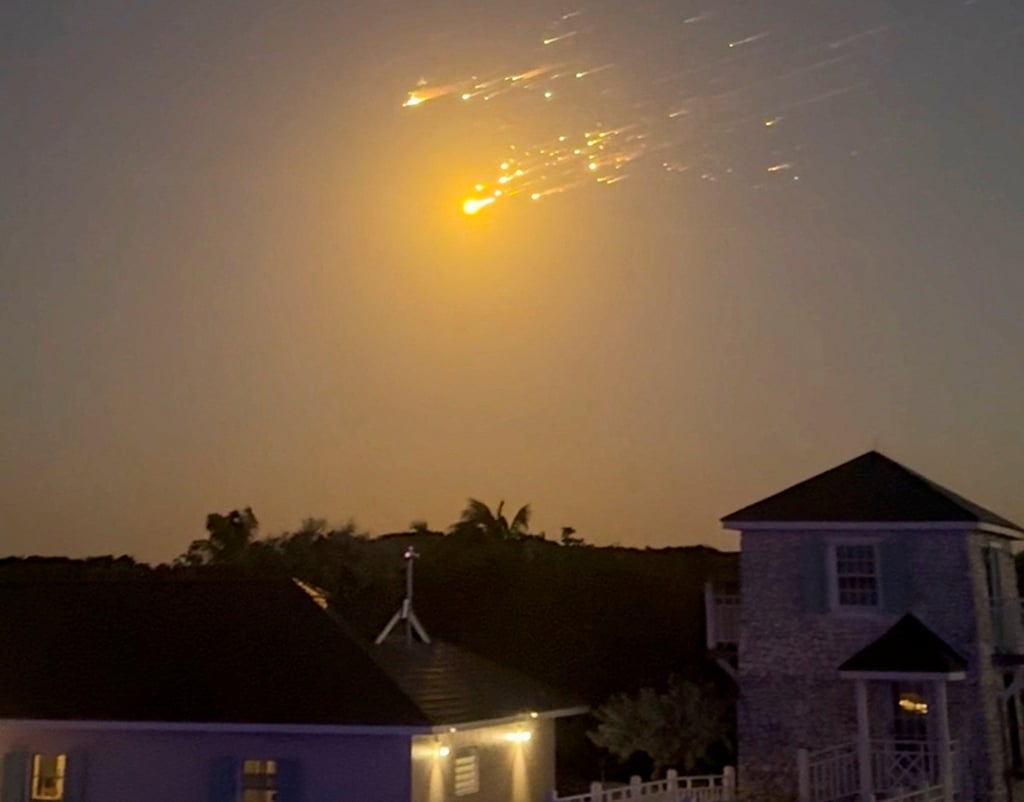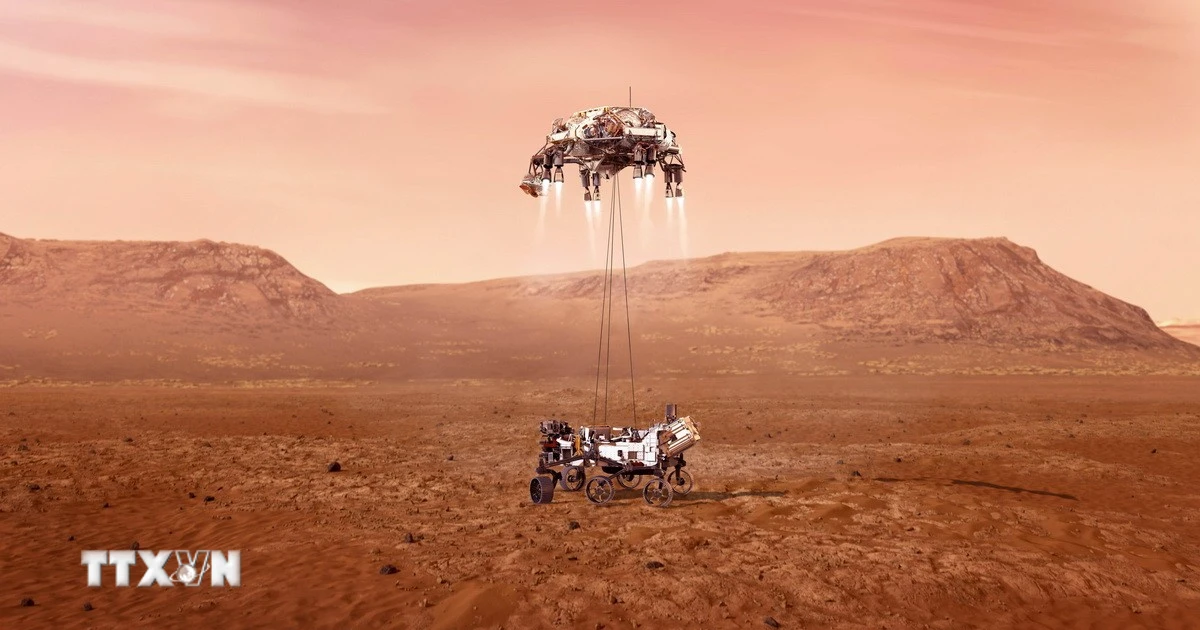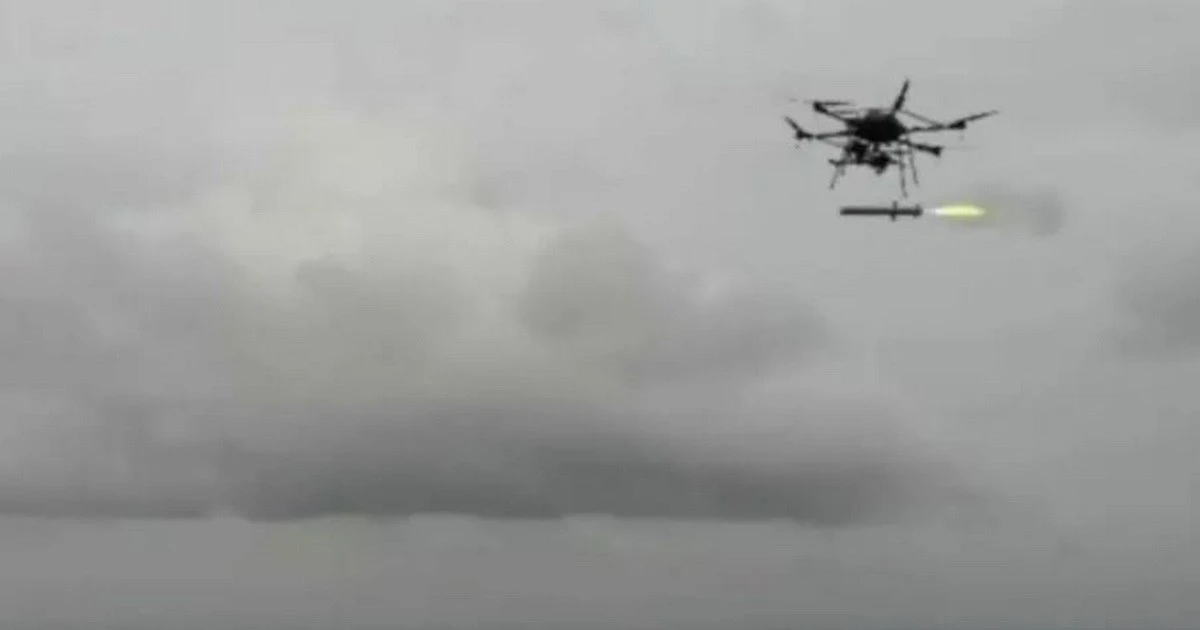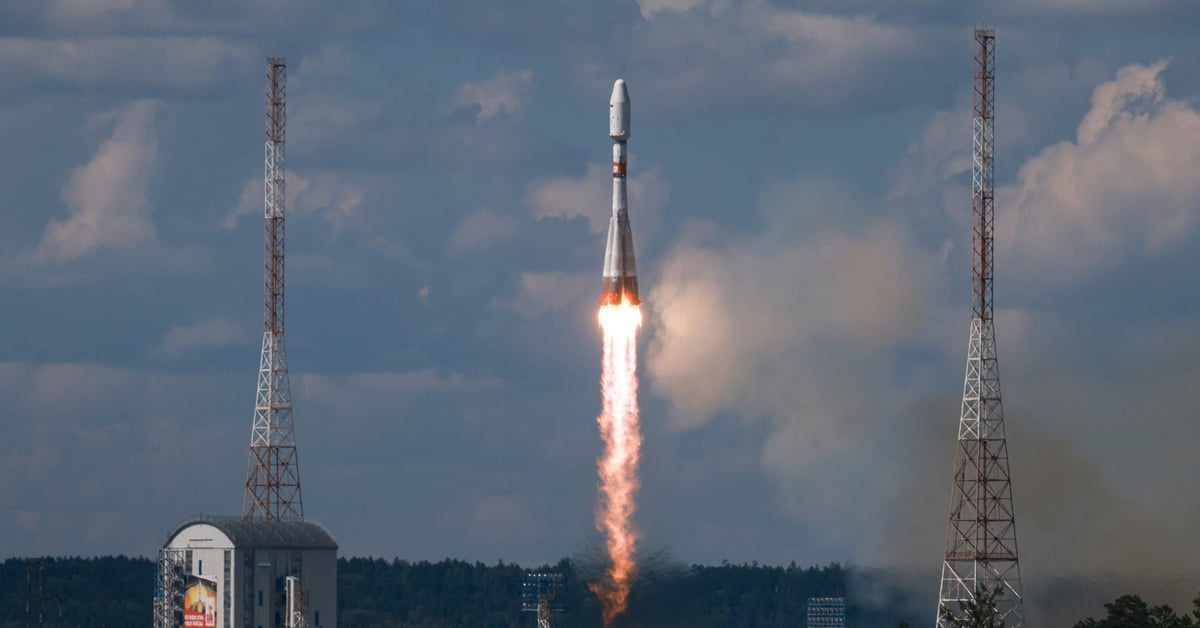Yesterday (March 7), billionaire Elon Musk's SpaceX confirmed that the Starship, the upper part of the most powerful rocket-spacecraft combination ever built, exploded during a test flight this morning (Vietnam time). AFP reported that the unmanned Starship mission lifted off from the launch pad at SpaceX's Starbase facility in Boca Chica, Texas, with the spacecraft on the 71-meter-tall Super Heavy rocket. About two and a half minutes after launch, the rocket separated as planned and landed successfully near Brownsville, Texas.
Debris burns like 'meteor shower' after Starship rocket explodes over Bahamas
However, less than 10 minutes after launch, the ship began to malfunction on its way to Earth orbit. Some of the ship's engines failed, and the ship began to wobble before losing contact with the control center. The Starship exploded and live television footage showed fiery debris falling over the Caribbean. "We can confirm we lost contact with the ship. Unfortunately, this happened last time," AFP quoted SpaceX spokesman Dan Huot as saying about the failed mission on January 16.

Fiery red debris of the Starship falls to the ground after an explosion in the air on March 7 (Vietnam time).
The Federal Aviation Administration (FAA) immediately activated a response mechanism, which temporarily suspended flights from airports stretching from Newark, New Jersey, and Philadelphia, Pennsylvania, to Miami, Florida. The FAA said SpaceX would have to investigate the explosion before it could resume testing. SpaceX said there was a problem with the tail of the spacecraft, which led to the loss of some Raptor engines and caused the spacecraft to explode. The company also confirmed that there were no toxic materials inside the debris that fell to the ground.
Standing 123 meters tall, the Starship spacecraft-rocket complex serves billionaire Elon Musk’s vision of Mars. The US National Aeronautics and Space Administration (NASA) is also waiting for a modified version of Starship to return astronauts to the moon under the Artemis program. Before it can carry out missions, SpaceX must prove that the ship is safe and reliable to carry crews and can perform orbital refueling for long-duration space flights.
Private US probe makes history with successful landing on the moon
* Also yesterday, the private company Intuitive Machines (USA) announced that its Athena lunar lander suffered the same fate as the Odysseus lander, according to Reuters. The collected data showed that the Athena lander tilted while landing on March 6 due to a problem with the laser distance measuring device. More than a year ago, on February 22, 2024, Intuitive Machines' Odysseus became the first private spacecraft to land on the moon. However, during the landing process, the ship encountered a problem that led to a broken leg and capsized.
Source: https://thanhnien.vn/tau-vu-tru-starship-cua-spacex-no-tung-tren-khong-185250307213434176.htm



![[Photo] President Luong Cuong attends special political-artistic television show "Golden Opportunity"](https://vstatic.vietnam.vn/vietnam/resource/IMAGE/2025/8/22/44ca13c28fa7476796f9aa3618ff74c4)
![[Photo] President Luong Cuong receives delegation of the Youth Committee of the Liberal Democratic Party of Japan](https://vstatic.vietnam.vn/vietnam/resource/IMAGE/2025/8/22/2632d7f5cf4f4a8e90ce5f5e1989194a)


![[Photo] Prime Minister Pham Minh Chinh chairs the conference to review the 2024-2025 school year and deploy tasks for the 2025-2026 school year.](https://vstatic.vietnam.vn/vietnam/resource/IMAGE/2025/8/22/2ca5ed79ce6a46a1ac7706a42cefafae)































































































Comment (0)